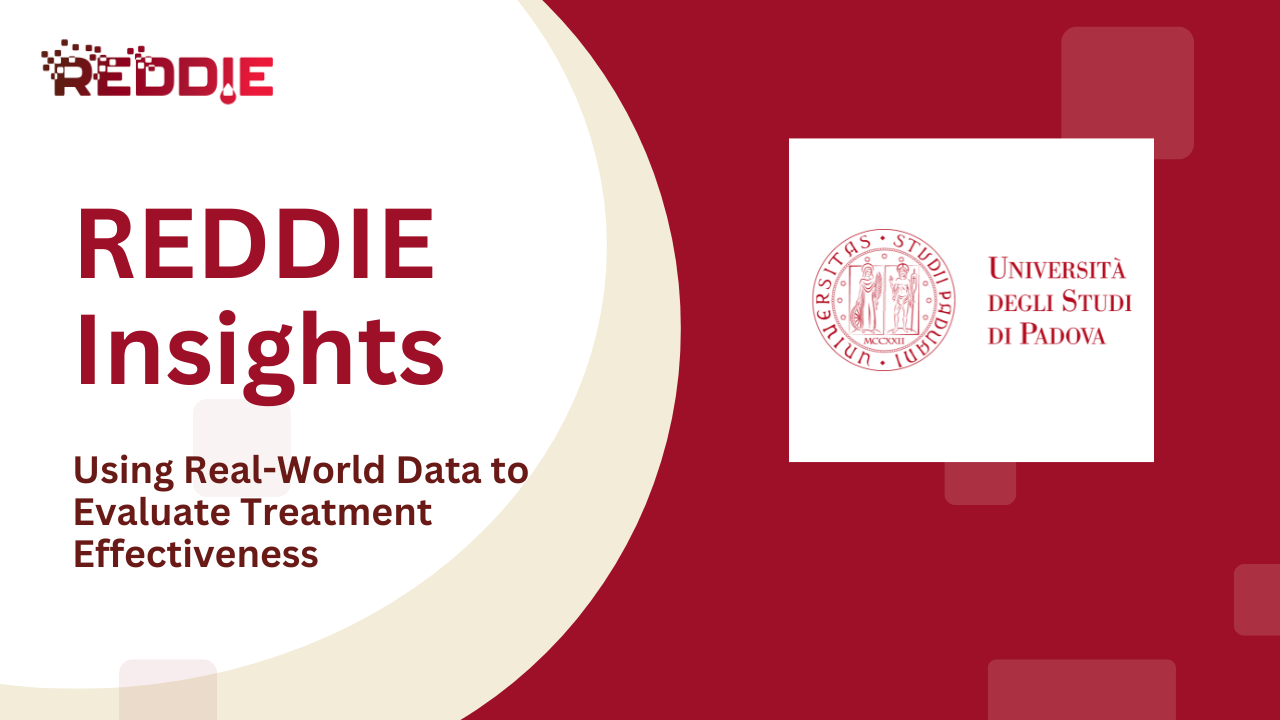Using Real-World Data to Evaluate Treatment Effectiveness
In the latest REDDIE Insight, the group from the University of Padua explain their work within the Work Package 5. Work Package 5, “Advanced methodological frameworks for enhancing clinical trials with real-world and virtual evidence”, led by the University of Padova, focuses on developing and applying innovative analytical strategies to strengthen the generation of clinical evidence beyond traditional trial settings.

Randomised controlled trials (RCTs) are widely recognised as the gold standard for evaluating the efficacy and safety of medical interventions. By randomly allocating participants to treatment or control groups, RCTs help to minimise bias and ensure that any observed effects can be attributed to the intervention itself. However, RCTs are often expensive, time-consuming, and conducted under conditions that do not fully reflect routine clinical practice.
In contrast, real-world data (RWD), including electronic health records, disease registries, and administrative databases, capture information on patient care as it occurs in everyday settings. These data can provide valuable insights into how treatments perform in diverse populations and under typical clinical conditions.
There are two key approaches to using RWD to generate clinical evidence. The first is target trial emulation, which involves designing a hypothetical randomised trial and using observational data to emulate its structure and logic. The second is to replicate the design of actual clinical trials using RWD, in order to test whether their findings are consistent in broader, more heterogeneous populations. Both strategies aim to extend the reach and applicability of clinical research beyond the controlled environment of RCTs.
In Work Package 5, we focus primarily on this second approach. One of the most widely used strategies to compensate for the absence of randomisation involves propensity score (PS) methods. These are statistical tools that estimate the probability that a patient receives a given treatment based on their characteristics at baseline. Once this probability is estimated, it can be used in several ways to reduce confounding and create comparability between treatment groups.
A common approach is propensity score matching, in which treated patients are paired with untreated patients who have a similar score, thus mimicking the balance between groups achieved by random allocation. Another method is propensity score weighting, where each patient is assigned a weight based on their inverse probability of receiving the treatment they actually received. This produces a virtual sample in which the distribution of baseline characteristics is balanced across treatment arms. Alternatively, stratification on the propensity score divides the population into subgroups (strata) with similar PS values, and treatment effects are estimated within each stratum.
These methods help reduce the influence of confounding factors and bring the observational analysis closer to the conditions of a randomised study. While they cannot eliminate all bias, especially from unmeasured variables, they represent a rigorous framework for drawing more credible causal inferences from real-world data.
In Work Package 5, we are studying how these methodologies can be applied to investigate clinically relevant questions related to diabetes treatment. Our aim is to complement traditional trials and strengthen the evidence base that informs medical decision-making, by making better use of clinical data collected in real-world practice.
